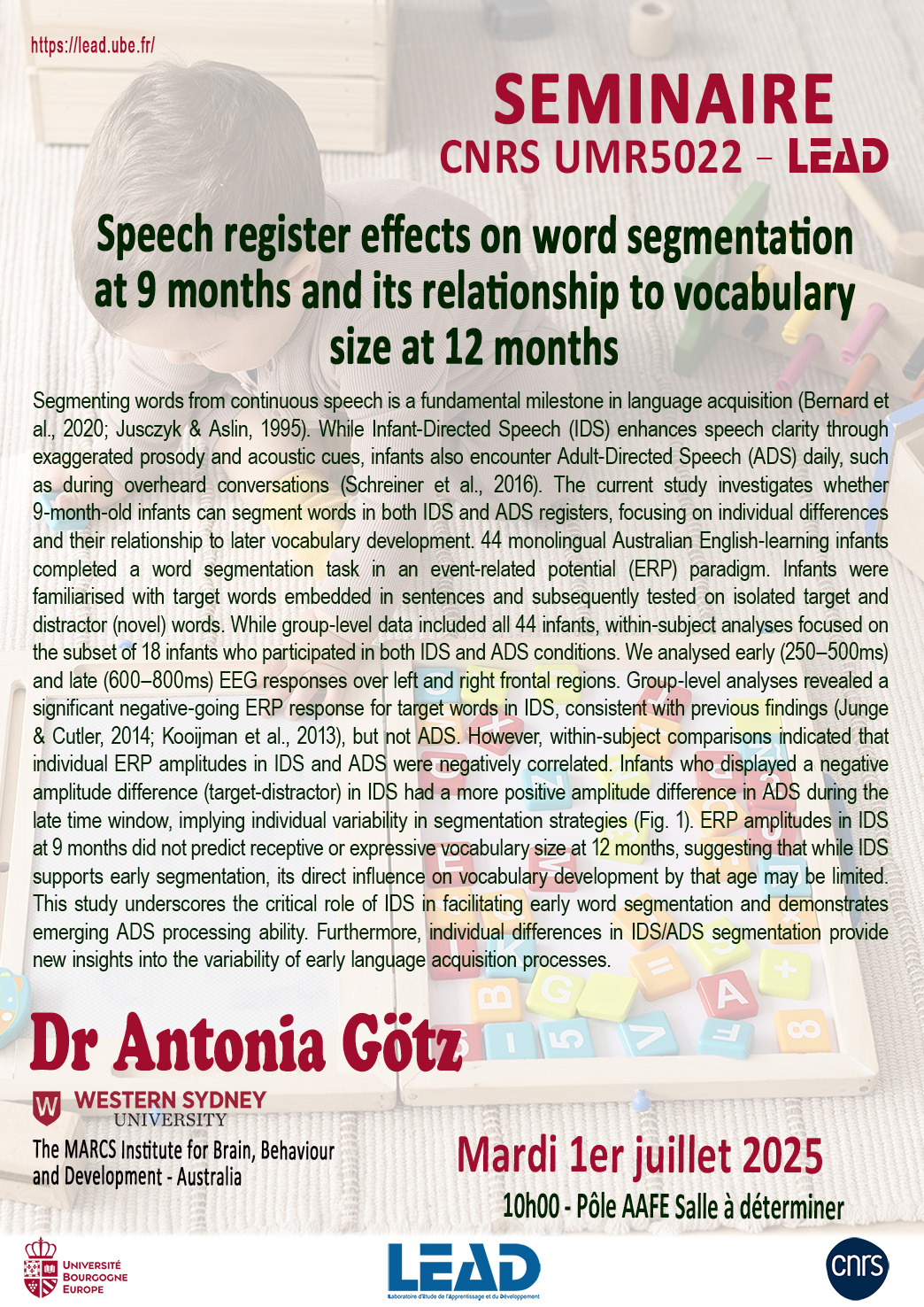Dr Antonia Götz, The MARCS Institute for Brain, Behaviour and Development, Western Sydney University
Seminar organized by Anna Fiveash
Presentation in English – AAFE – UBE
Segmenting words from continuous speech is a fundamental milestone in language acquisition (Bernard et al., 2020; Jusczyk & Aslin, 1995). While Infant-Directed Speech (IDS) enhances speech clarity through exaggerated prosody and acoustic cues, infants also encounter Adult-Directed Speech (ADS) daily, such as during overheard conversations (Schreiner et al., 2016). The current study investigates whether 9-month-old infants can segment words in both IDS and ADS registers, focusing on individual differences and their relationship to later vocabulary development. 44 monolingual Australian English-learning infants completed a word segmentation task in an event-related potential (ERP) paradigm. Infants were familiarised with target words embedded in sentences and subsequently tested on isolated target and distractor (novel) words. While group-level data included all 44 infants, within-subject analyses focused on the subset of 18 infants who participated in both IDS and ADS conditions. We analysed early (250–500ms) and late (600–800ms) EEG responses over left and right frontal regions. Group-level analyses revealed a significant negative-going ERP response for target words in IDS, consistent with previous findings (Junge & Cutler, 2014; Kooijman et al., 2013), but not ADS. However, within-subject comparisons indicated that individual ERP amplitudes in IDS and ADS were negatively correlated. Infants who displayed a negative amplitude difference (target-distractor) in IDS had a more positive amplitude difference in ADS during the late time window, implying individual variability in segmentation strategies (Fig. 1). ERP amplitudes in IDS at 9 months did not predict receptive or expressive vocabulary size at 12 months, suggesting that while IDS supports early segmentation, its direct influence on vocabulary development by that age may be limited. This study underscores the critical role of IDS in facilitating early word segmentation and demonstrates emerging ADS processing ability. Furthermore, individual differences in IDS/ADS segmentation provide new insights into the variability of early language acquisition processes.
